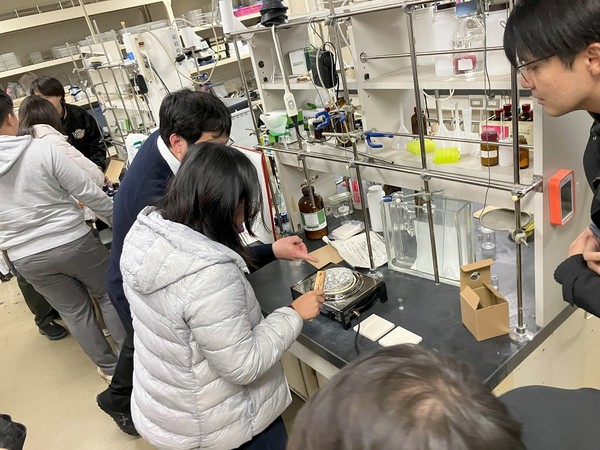A report on COVID-19 update in Bangladesh

Saifur Rahman, DVM, MSc in Microbiology,
Assistant Professor, Department of Microbiology and Hygiene, Bangladesh Agricultural University, Myemensingh, Bangladesh
I am a fortunate participant of Sakura Science Exchange Program 2017 in Japan. I am currently residing in Mymensingh-2202, Bangladesh.
When I am writing this report, Bangladesh is going through the 2nd wave of COVID-19 pandemic where the delta variant is found to be dominant. The present status of the pandemic on 29-Aug-2021 in Bangladesh (according to Directorate General of Health Services) is following: a) Total confirmed cases: 1493537; b) Newly confirmed cases on that day: 3984; c) Active cases on that date: 51825; d) Cases in ICU: 1089; e) Total death cases: 26015; f) New death cases on that day: 89.
Bangladesh is an overpopulated low middle income country with a growing economy. COVID-19 pandemic has severely affected the heart of our economy like garments industry and agriculture. This pandemic has been a nightmare since a great percentage of low and middle income people became jobless and are in the threat of crossing the poverty line. It was the toughest job for the government to balance between life and livelihood. The Bangladesh (BD) govt has taken a number of measures to control the pandemic as follows:
- Govt has provided financial packages for industries (mainly garment sector) to overcome their losses.
- Has directly provided money to the mobile bank account of the poor people listed by the local government representatives.
- Has taken initiatives to control the price of daily essential commodities through conducting mobile court in markets.
- Employed lockdown under different names such as complete lockdown, shutdown, restricted movement, etc. for different duration before and after the biggest religious festival (Eid-al-Adha) to control the spread of COVID in rural and urban areas.
- Movement of the people and vehicles were restricted. People were only allowed to be out of home for emergency purposes.
- Restaurants were open to provide the home delivery only. Shopping malls were closed. The amusement parks, tourist places and other entertainment areas like cinema hall were closed.
- During lockdown, whoever flouted the rulings were fined and sometimes detained in jail. However, the general populace became impatient to the lockdown since they were in short of money to buy foods.
- Educational institutions were closed from the very beginning to prioritize the health of the students. However, online learning has been adopted to continue the education. Govt has taken initiatives to vaccinate the students and open schools, colleges and universities step by step.
- Govt, non-govt and private offices and banks were open in most cases to provide service.
- Considering the economic importance of the garments industry, the factories were out of restrictions except during the shutdown period.
Though different actions taken by the govt are under scrutiny, still some measures are found to lower the rate of infection.
RT-PCR, GeneXpert and Antigen testing are the methods being used to diagnose the COVID-19 in Bangladesh. In government test centres, people have to pay BDT 100, whereas in private hospitals it may vary from BDT 1500 to BDT 3500. If samples are collected from home, then they have to pay extra BDT 100 for govt services whereas it may vary from BDT 500 – BDT 1000 for private services.
Bangladesh began the administration of COVID-19 vaccines on 27 January 2021 while mass vaccination started on 7 February 2021. The govt have arranged free vaccination for the Bangladeshi people. So far, Bangladesh has approved the Oxford–AstraZeneca, Russian Sputnik V, Chinese BBIBP-CorV (Sinopharm), Pfizer–BioNTech and Moderna vaccines for emergency use only. To date (28-08-2021) Bangladeshi people have received Oxford–AstraZeneca, Sinopharm, Pfizer–BioNTech and Moderna COVID-19 vaccine and around 11% (18070967) of the total population have received at least 1st dose whereas around 4.6% (7639793) have received the 2nd dose.
In this COVID pandemic, along with govt, different national and international NGOs and NPOs, businessman, politicians, and communities such as teachers’ federation, student organizations have contributed to support the poor people throughout the country.
Students have suffered most, especially in countries like Bangladesh where online learning was not so popular before the pandemic. It took time to adopt online learning by overcoming different barriers like unavailability of device, poor internet connection, lack of trained personnel etc. University grants commission of Bangladesh provided soft loans to the university students for devices and the govt asked the mobile operators to provide low priced internet package for student to use different platforms such as zoom, google classroom etc. Nevertheless, hands-on practical classes pose a challenge that still need to be overcome. Currently, we are delivering video tutorials to the students as a preliminary idea for them and waiting for the good days to come where they can take part in practical learning.
The Covid pandemic has changed the world in many different ways. Although many bad things had happened, there is a positive effect of COVID in my life. During this period I have engaged myself in publishing my research findings and wrote to UK to find a PhD supervisor. I am happy to share that I have been awarded a fellowship to pursue my PhD at University of Oxford, UK and preparing for my course to commence this upcoming October. Please keep me in your prayers.









